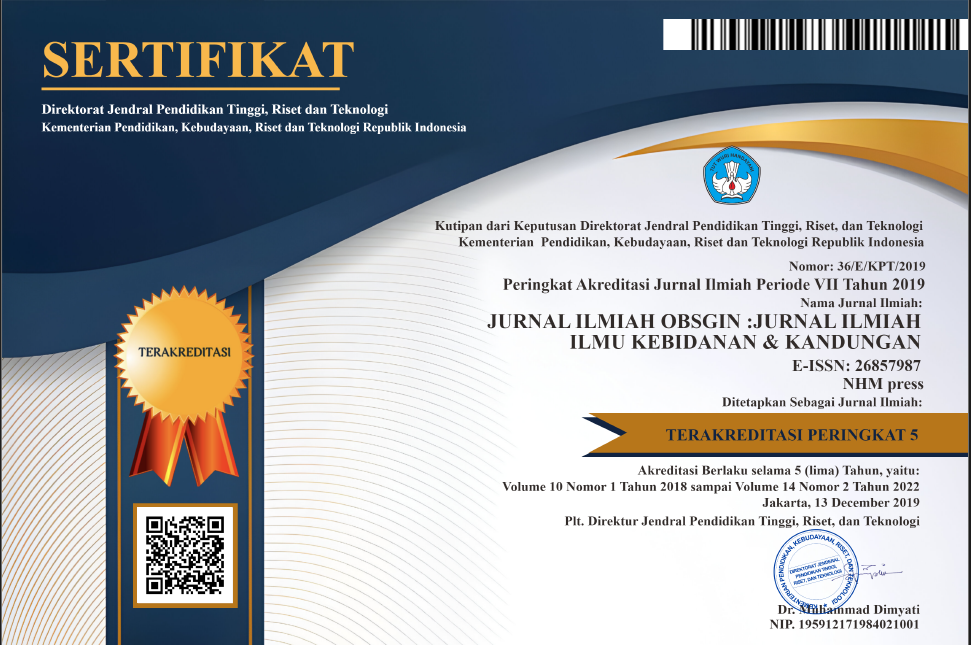Effect of Xanthone Administration on The Number of Sertoli Cells In Mice Induced By 2-Methoxyethanol
Abstract
Antioxidants can be used to protect against oxidative stress which is one of the important mechanisms of 2- methoxyethanol (2-ME) -induced testicular toxicity . This research was conducted to find out normal and abnormal motility of spermatozoa cells in mice induced by 2- Methoxyethanol . The study used 35 male mice which were divided into 5 groups, namely: the control group (the mice were given purified water every day by distillation); the 2-ME group (the mice were given 2-ME 200 mg /kg BW daily orally once a day for 35 days); and the treatment group (the mice were given xanthones 60 mg , 120 mg , and 240 mg /kg BW orally once a day for 38 days, and on the 3rd day, 2-ME 200 mg /kg BW were given one hour after. Xanthones were given). After 38 days, the next sperm mice will conduct inspection motility. The results showed that the administration of 2-ME could influence abnormality spermatozoa motility. However, xanthone treatment significantly shows _ enhancement normality spermatozoa motility . Conclusion From the results of this study indicate that xanthones are able to increase spermatozoa motility in mice that were given 2-ME.
References
Agarwal A, Saleh R, Bedaiwy MA. 2003. Role of reactive oxygen species in the pathophysiology of human reproduction. Fertility and Sterility. No. 79, pp. 829-843
Agarwal A, Virk G, Ong C, du Plessis SS. 2014. Effect of Oxidative Stress on MaleReproduction.
World Journal Mens Health, vo. 32, no. 1, pp 1-17
Berndtson WE, Foote RH.1997. Disruption of spermatogenesis in rabbits consuming ethylene glycol monomethyl ether. Reproductive Toxicology, vol. 11, no. 1, pp.29-36.
Chin YW., Kinghorn AD. 2008. Structural characterization, biological effects, and synthetic studies on xanthones from mangosteen (Garcinia mangostana), a popular botanical dietary supplement. Mini Rev Org Chem. 5:355–364
Ernawati, I’tishom R, Sudjarwo SA. 2019. The signal transduction of xanthone as a protector on 2-methoxyethanol-induced cardiac cell damage in mice. Journal of Advanced Pharmaceutical Technology and Research, no. 10, pp. 184-189
Feradis. 2010. Bioteknologi Reproduksi pada Ternak. Bandung: Alfabeta Press
Fritz and Speroff. 2011. Clinical Gynecologic Endocrinology and Infertility. 8th ed. Philadelphia : Lippincott Williams & Wilkins, pp. 579-83.
Hafez ESE. 2000. Semen Evaluation in Reproduction in Farm Animal. 7th edition.Philadelphia: Wolters Kluwer Company.
Hayati A, Ernawati, Iswanto M , Maulidiyah N, Azzahra EI, Rahmaniyah F,HilmanFAM, Sugiharto, Winarni D. 2017. Sperm quality and testicular structure of Mus musculus after Garcinia mangostana L pericarp extract administration in different polarity of 2- Methoxyethanol. Journal of Advanced Zoology, vol. 38, no. 1, pp. 64-78.
Johanson G. 2000. Toxicity review of ethylene glycol monomethyl ether and its acetate ester.
Critical Reviews in Toxicology, no. 30, pp. 307-345.











